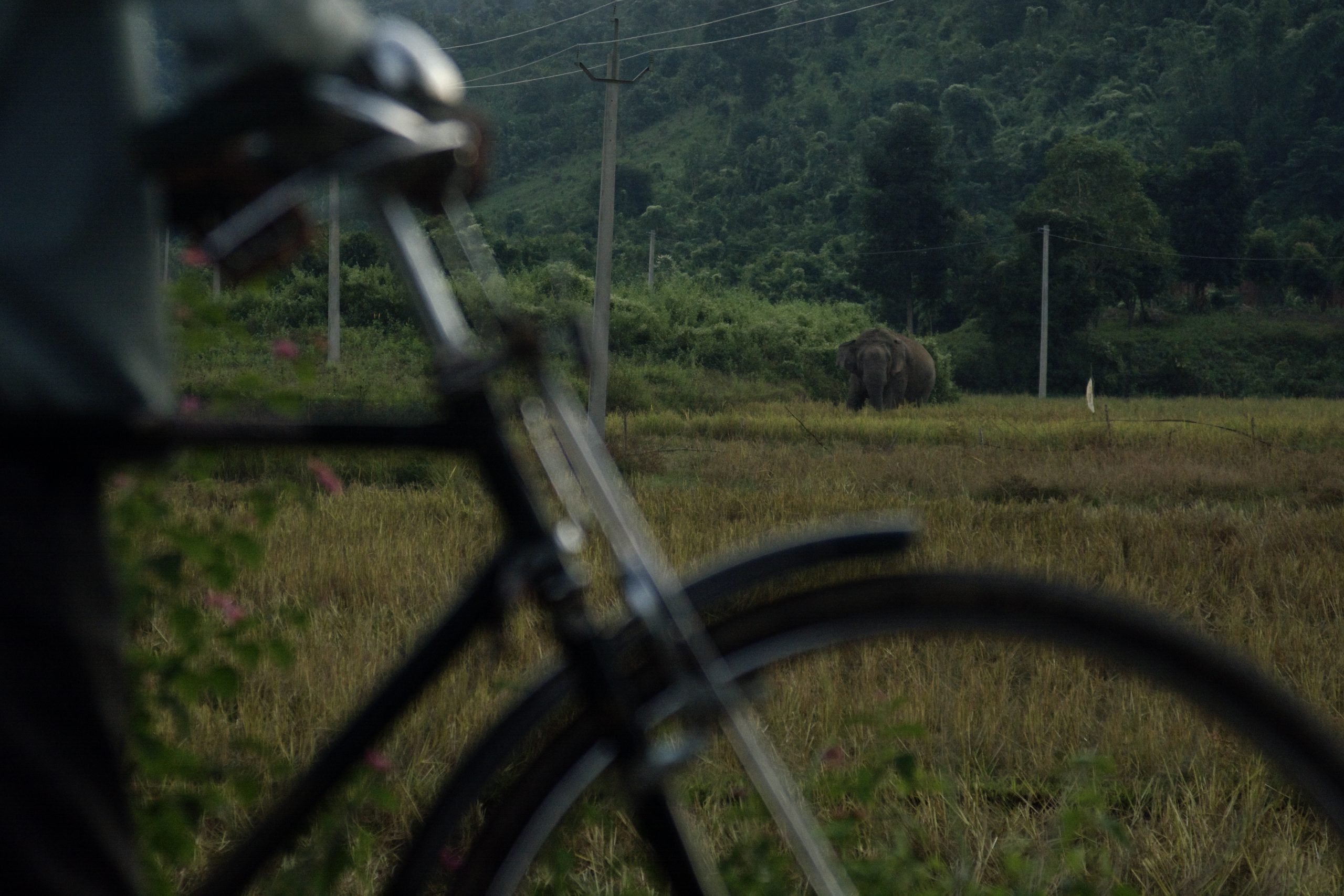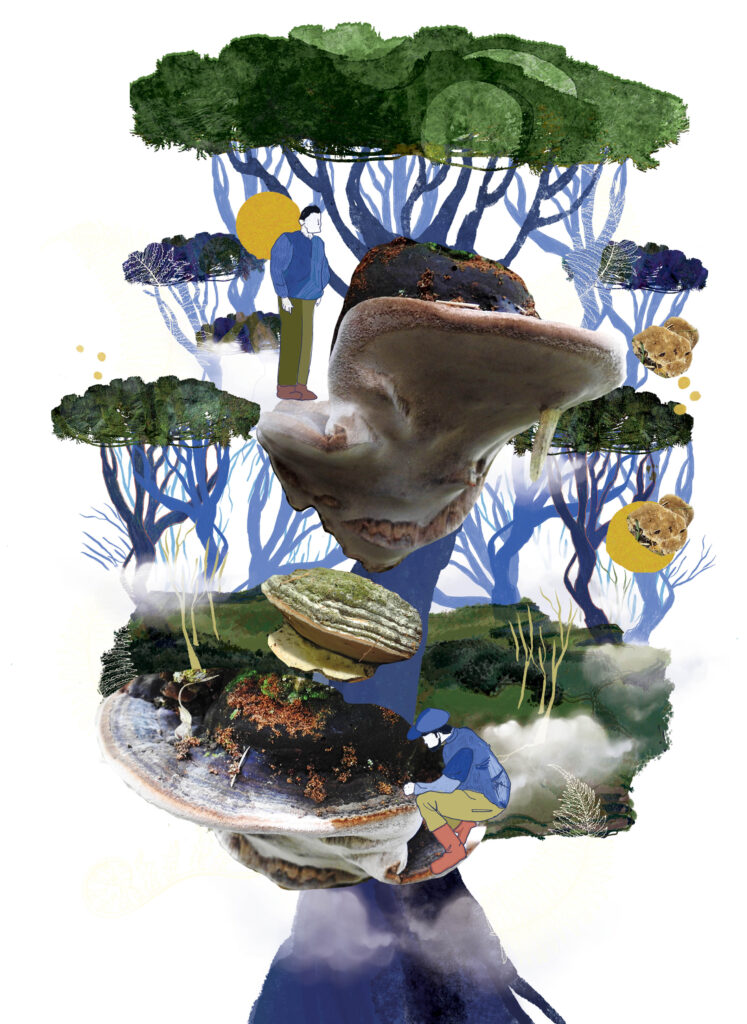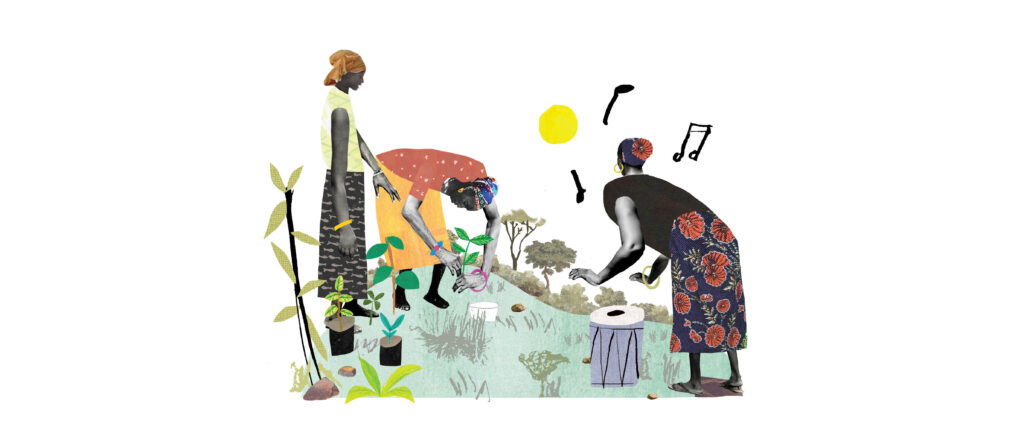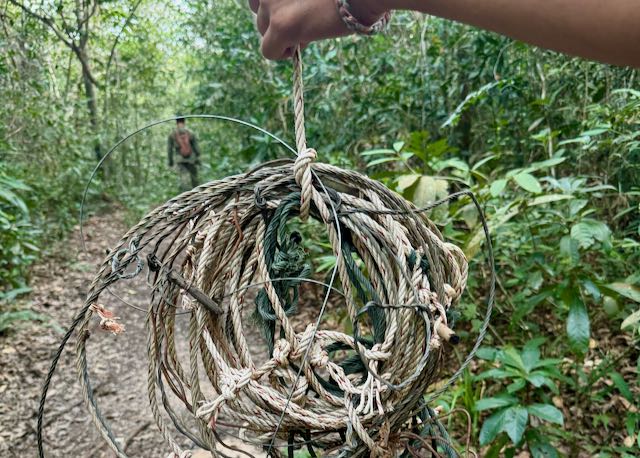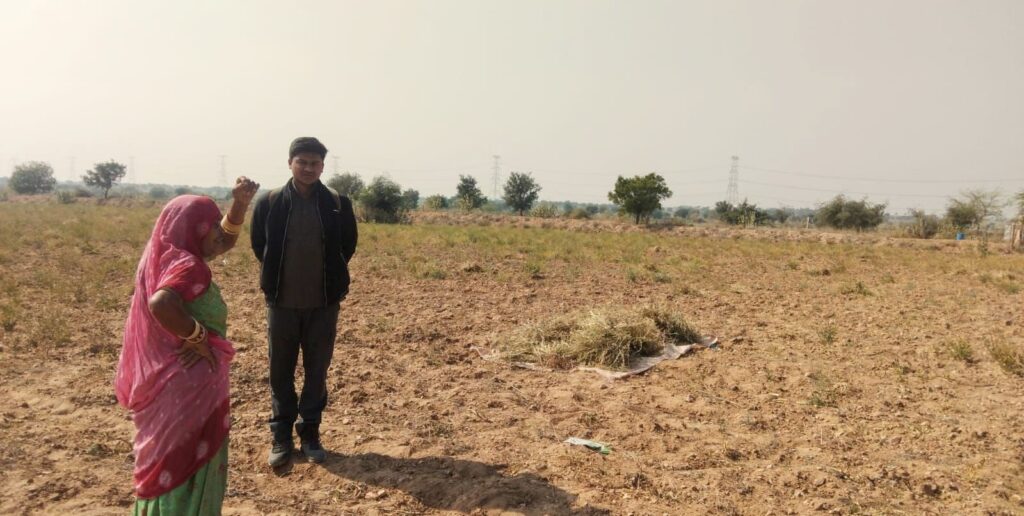Feature image: Most human-elephant conflicts in northeast India are a result of crop damage by elephants, as seen here with this large bull eating ripened paddy. One such event can cause significant economic loss to farmers.
A dense fog envelops us as we sit atop a bamboo mat raised on stilts. Every few minutes, Dhan da flicks on the flashlight and tries in vain to penetrate the characteristic winter night fog of the floodplains of the Brahmaputra river in northeast India. We are guarding his paddy fields from elephants that use the cover of darkness to forage on the delicious crop.
Human-elephant conflict in this region claims the lives of a hundred people and tens of elephants every year. Massive deforestation coupled with nutritious paddy grown on the same land that elephants had historically used has led to these clashes becoming more serious each year. In order to understand how better to keep elephants and human beings safe from each other, I chose to study the two species in the floodplains of the Brahmaputra.
One of the most widespread consequences of human-elephant conflict on people is the constant fear that people live in, with the dread of losing their livelihoods or lives at any moment in the night. In order to remedy this, a simple solution in the form of a non-lethal fence was put into practice by the state of Assam and NGO partners. This fence delivers a sharp but non-lethal jolt to animals that come in contact with it, creating a psychological barrier and effectively securing the area it encloses. However, in order for this to work, it has to be maintained—the technical machinery needs to be checked regularly and undergrowth around the fence needs to be cleared. This is low-intensity, easy and quick work. Since these fences typically enclose villages, the households within the benefitting village are entrusted with the task of this maintenance.
Unexpectedly, and despite the high effectiveness of this solution, 65 percent of the fences in the landscape were not maintained. This was primarily due to the individuals in the community failing to come together and work collectively. I wanted to understand why this was the case for my Masters’ thesis. What were we missing that led to such a suboptimal, counter-intuitive and dangerous outcome?
On this journey, I came across the work of Elinor Ostrom, who dedicated her academic life to understanding how people avert the ‘tragedy of the commons’ in different contexts across the globe. She formulated a framework for social-ecological systems (SES) and wrote extensively on the factors that predicted their sustainable use over time. Not having worked on such problems previously, I was skeptical of whether I would be able to put this wide framework into practice during my fieldwork.
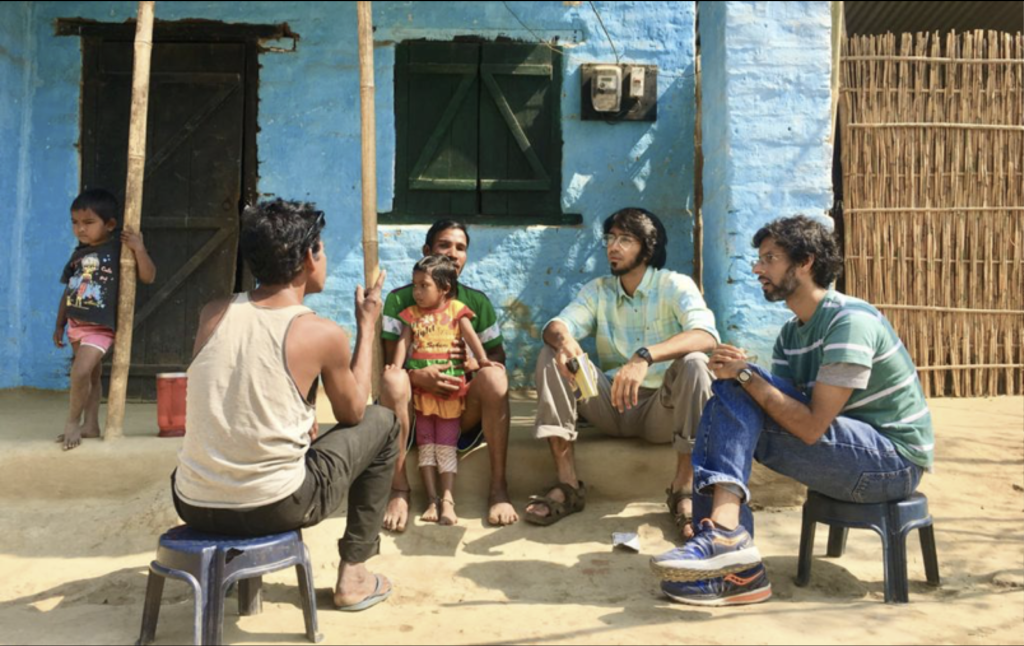
However, within the first few days of being in the field, I was amazed at the power of this system. It proved to be a strong guide to identify factors that influence collective action in these complex, chaotic systems where society and ecology exert such strong influences on each other. For instance, right out of Ostrom’s principles, we found that the predictability of the system was of critical importance. There was the incentive to maintain fences when elephant raids were either very frequent or infrequent but unpredictable, as opposed to the cumulative damage incurred by a community (in the form of crop/ house damage and human injury or death). This was a novel insight for practitioners who generally went by the yardstick of the total damage to gauge the level of conflict.
We kept refining our provisional models with newer insights from the data being collected. This iterative process was a departure from conventional ecological studies where all the data is collected in one go and then analysed, to prevent one from getting biased by the data. Through this approach, we were able to explore the causal mechanisms driving the outcome of the fences in great detail. In particular, this helped us understand the non-material costs and benefits that people consider.
For instance, all the farmers in a village where a fence had failed due to poor maintenance mentioned that when duly maintained, the fence was 95 percent effective in deterring elephants and they reported a reduction in damage to their crops by at least half. In a purely economic sense, this saved orders of magnitude of crops. However, the fence had fallen into disarray after a tiny minority of households that lived in the center of the village refused to partake in maintenance efforts (which involves walking the perimeter of the fence, about 3 km/30 mins, once a month). This led the other individuals, including those for whom the material benefits greatly outweighed the costs, to voluntarily disengage from maintenance.
Ostrom has aptly termed this the ‘sucker effect’, where collective action fails because people do not want to feel like ‘suckers’ for keeping a promise that others are breaking. Over the course of our study, we found that non-material costs and benefits like these played a critical role in securing collective action.
Being an iterative process, we would collect data, analyse it back at the field base with my guides and then return to the field to pick on threads. On one of my visits, just as I made myself comfortable on the mud beside his fishing pond, Dhan da saw me, beamed a bright smile and said, “I love it when you come and speak with me — you keep asking the real questions—the most meaningful ones!” which I felt was a compliment to Ostrom’s SES and not really to me!
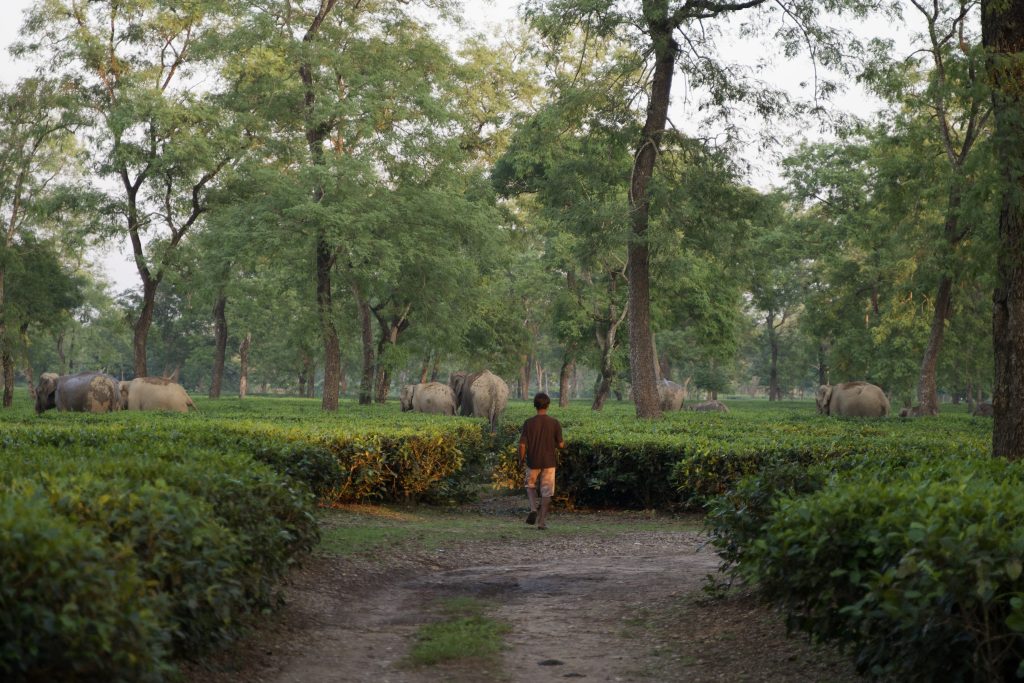
In another village, on discussing the monitoring and governance of these fences with a State Forest Department official, he said: “Actually, I just thought of this now—when we are establishing these fences, we largely think about how good it is, and that it is so much better than staying up all night and chasing elephants. But this is food for thought, we do not actively consider the length of the village, the number of people, and coordination amongst them, which is just as important—and makes or breaks a fence. I am definitely going to think about this next time.” This is identical to the layered governance systems aspect of the SES, which recommends looking at the geographic range and size of the system at scale.
We are currently implementing the findings of this study on the ground to create more robust community institutions to further human-elephant coexistence in uman-dominated areas. The results so far have been encouraging, with the State actors and community members actively drawing on these results in practice. Other studies from across the Indian subcontinent have used the SES successfully to explore the governance of urban lakes, forests, fisheries and drinking water. Established diagnostic tools like the SES can be of great help when working on interdisciplinary problems, especially in the conservation space.
